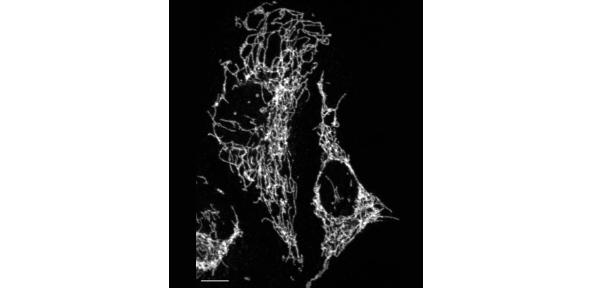
Submitted by Penny Peck on Thu, 19/03/2020 - 00:00
New discovery uncovers the complex dance of mitochondria, the cellular power plant.
All cells in the body contain an ancient, membrane bound compartment called mitochondria that house thousands of biochemical reactions essential for life. These reactions provide fuel for cells through the breakdown of sugar and fat, also generating the building blocks to make protein and DNA. Each cell can have hundreds of individual mitochondria, which are highly dynamic as they move throughout the cell, fuse together, divide, and interact with other compartments of the cell to receive and deliver metabolites. The shape and number of these organelles is regulated and integrated within cell signalling pathways from cell cycle to cell death and differentiation. Any errors in mitochondrial dynamics or function can lead to disease, particularly neurological disorders, cancer, metabolic syndromes, and our response to infection.
A new collaborative study published in Science from the labs of Dr Heidi McBride at the Montreal Neurological Institute, Montreal, Canada, and Dr Julien Prudent at the MRC Mitochondrial Biology Unit, University of Cambridge, Cambridge, UK, shed new light on these processes. Their work finely described the molecular mechanism regulating the late steps of mitochondrial division. This process is unexpectedly complex, requiring three other cellular compartments to mark the site of division and drive the final event. Direct contact between mitochondria and the endoplasmic reticulum, a thin, tubular compartment, was already known to initiate mitochondrial constriction. In this study, the McBride and Prudent labs showed that in addition to lysosomes, small vesicles from another compartment, the Golgi apparatus, must also converge at the site of division. Without a very specific lipid, the Phosphatidylinositol 4-phosphate (PI(4)P) on the Golgi vesicle structures, the mitochondria could not divide and were stuck at the very last step before it split into two, which created a highly elongated and interconnected network.
This work highlights how tightly integrated the mitochondria are with other cellular compartments, insights that will guide new therapies in diseases where mitochondrial dynamics and function are altered.
doi: 10.1126/science.aax6089

